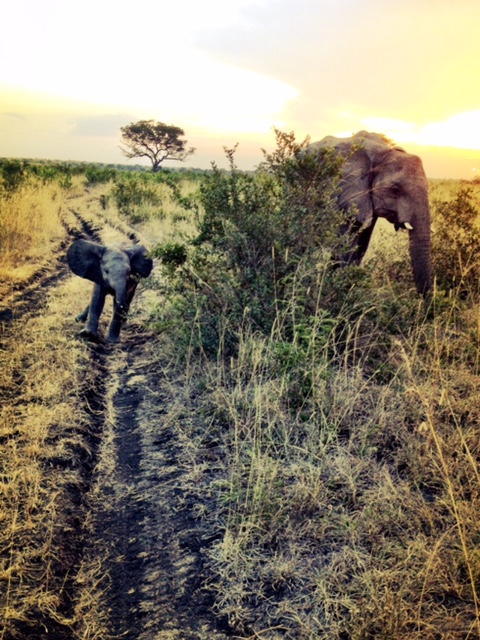
09 May Elephant poaching on the rise in Kruger
Yolandi Groenewald spoke to the Kruger’s chief ranger about what the threat of elephant poaching means for the world-famous reserve

In the first quarter of 2016 the park had already lost 15 elephants, said chief ranger Nicholus Funda. © Ravi Gajjar
A new wave of elephant slaughters in the Kruger National Park is keeping chief ranger Nicholus Funda awake at night.
While most of the Kruger’s anti-poaching resources have been channelled towards protecting rhinos, Funda said elephant poaching is becoming a real threat and the world-famous reserve is being forced to fight rhino and elephant poaching at the same time with the same resources.
The Kruger lost 22 elephants last year, and the deaths are increasing. Funda said in the first quarter of this year the park had already lost 15 elephants.
“We have 12,000 elephants in the park,” he said. “Some would say, why worry, but we value every one of our animals.”
Until recently South Africa had escaped ivory poachers trying to cash in on the illicit global trade, worth more than $1-billion.
When two elephants were killed in the Kruger in 2014, it became the first time South Africa had lost elephants for “well over a decade”, South African National Parks (SANParks) said.
North of South Africa’s borders ivory poaching has escalated over the past five years. Last year Tanzania said it had lost two-thirds of its elephant population in just four years. Zimbabwe recorded more than 370 elephant deaths over the past two years.
Conservationists estimate that every year between 35,000 and 50,000 elephants are poached. Today, there are fewer than 500,000 elephants left on the African continent.
Most of the elephant poaching incidents in the Kruger have taken place up in the north of the park, while rhino poaching has been concentrated in the south, where most of its rhinos are found.
Escalating elephant poaching means park management has to stretch its anti-poaching resources along the reserve’s 1,000km border, said Funda. Patrolling the huge reserve is no easy task and deciding on which areas to focus creates headaches for the management.
“There are so many decisions to be taken. What do we need? More bodies? More technology? How do you police such a huge boundary?” Funda said. “If we start spreading our resources, we will be spread thin.”

So far the Kruger’s elephant poachers have eluded capture. © Yolandi Groenewald
Vultures have also been a casualty of elephant poaching, as unscrupulous poachers poison the carcass of their prey. The poisoning of carcasses is a trend associated with the spike in elephant killings across the African continent.
In March two lions and more than 100 vultures in the Kruger died after eating the poisoned carcass of an elephant.
“It seems poachers have resorted to wildlife poisoning in the national parks and other protected areas in Southern Africa,” said Glenn Phillips, the park’s managing executive, said after the incident.
Kruger’s head of special operations and anti-poaching, Bruce Leslie, said the latest surge of elephant poaching has created new challenges for his team.
“This is a big dilemma,” he said, referring to the new anti-poaching strategies that will have to address both rhino and elephant poaching.
So far the elephant poachers have eluded capture, but Funda said the warning lights are flickering and the park could not afford to be complacent. “We will be ready [for the elephant poachers],” he said.
Related investigation: Mozambique poachers set sights on Kruger ivory: Oxpeckers reported in August 2013 that poachers had killed at least 12 big tuskers on the Mozambican side of the border with the Kruger, raising fears that the ivory wars afflicting other parts of Africa were filtering through to the tip of the continent.
Groenewald’s trip to the Kruger park in April was sponsored by Rhino Tears, a range of wines from the Mt Vernon estate in Cape Town that donates proceeds from every bottle sold to anti-rhino poaching efforts. Over the past year since Rhino Tears launched, it has contributed almost R1-million towards the procurement of ranger equipment and support for projects Watchdog and Skywards. Find out more about Rhino Tears at https://www.rhinotears.co.za, or https://www.facebook.com/rhinotearswine/
